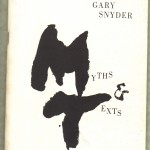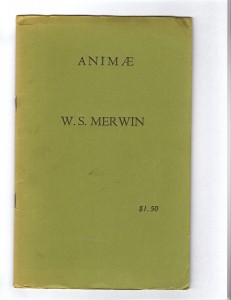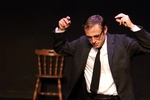 So, we’ve been preparing for Paul Goldberger’s lecture tonight on the future of cities in the 21st century. It’s 6 pm tonight in the White Stag building, $25. Why spend that kind of money on an architecture critic whose Sky Line column you can read in the New Yorker? Well, mostly because a lecture is a totally different form — more elastic, if only because of the presence of the audience, one that allows for a bit more speculation because its opinions aren’t frozen forever in print (or a digital file).
So, we’ve been preparing for Paul Goldberger’s lecture tonight on the future of cities in the 21st century. It’s 6 pm tonight in the White Stag building, $25. Why spend that kind of money on an architecture critic whose Sky Line column you can read in the New Yorker? Well, mostly because a lecture is a totally different form — more elastic, if only because of the presence of the audience, one that allows for a bit more speculation because its opinions aren’t frozen forever in print (or a digital file).
Spending some time with Goldberger’s columns and other work (for Vanity Fair, say) is a comfortable experience. He’s smart and observant, of course (he did win a Pulitzer for his criticism in the New York Times before moving to the New Yorker), and he’s also careful and even-handed (perhaps a result of those long years in daily journalism). So, he can give a measured opinion about the heavy hand of New York’s master planner Robert Moses, without giving the impression that he’s fallen in with the Moses revisionists seeking to spin some of the truly awful things Moses did to New York (and even Portland — until we revolted the same way New York did). Moses did some good things ; some bad things. That was the tenor of his review of Brad Cloepfil’s 2 Columbus Circle building, too — he found a mixed bag, perhaps less than hoped for outside and more than hoped for inside.
The reason I plunked down for a ticket, though, is that I really liked his investigations of Beijing during the Olympics, and those columns give the topic of his lecture even more gravity. If the future is Beijing and Shanghai, what does that tell us? Because frankly, it chills me to the marrow. The massive towers of Dubai, Abu Dhabi, Kuwait City, Singapore and China seem so futuristic somehow, but not in a good way. Dystopian. Like Blade Runner or Orwell. In a way, I see them as the ultimate triumph of Robert Moses, perhaps, or Le Corbusier, the next sterile, logical step. They seem such perfect machines for control of those within, for detection of the thought-crimes they commit. The smart building. The panopticon. The luxury prison.
And then what’s going on outside those “smart towers”, which generate their own energy, purify and condition their own air? Those arks designed to lodge the “lucky” as they sail into the future? Outside, it’s a killing field of crazy tropical infections brought about by the Warming, scarcity as populations explode and then crash, increasingly polluted, increasingly dangerous, increasingly uninhabitable. Thought crime inside the tower is punished simply by expulsion into the chaos outside.
Whew! It felt good to get that out of my system! And I’m hoping that Mr. Goldberger will be able to put my fears to rest. Twenty-five bucks would be a small price to pay…




 Most Art Scatter readers know that I work at The Oregonian, right? Editing the writers of the arts staff (and a fine band they are!) insofar as they will let me? I haven’t talked about this much directly, mainly because I didn’t want Art Scatter to be a place where people came to criticize the paper or its arts coverage. That part of things has worked out well! I’m not sure how exactly I would characterize Art Scatter, but it isn’t a newspaper kvetch site, that’s for sure.
Most Art Scatter readers know that I work at The Oregonian, right? Editing the writers of the arts staff (and a fine band they are!) insofar as they will let me? I haven’t talked about this much directly, mainly because I didn’t want Art Scatter to be a place where people came to criticize the paper or its arts coverage. That part of things has worked out well! I’m not sure how exactly I would characterize Art Scatter, but it isn’t a newspaper kvetch site, that’s for sure.






